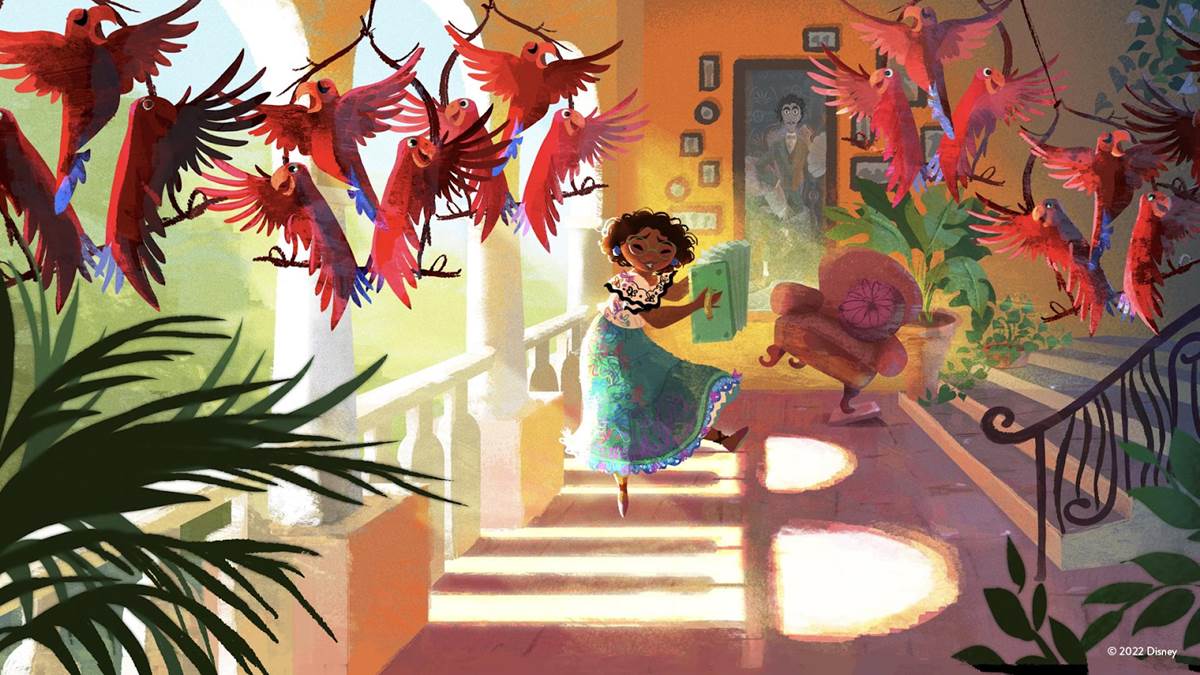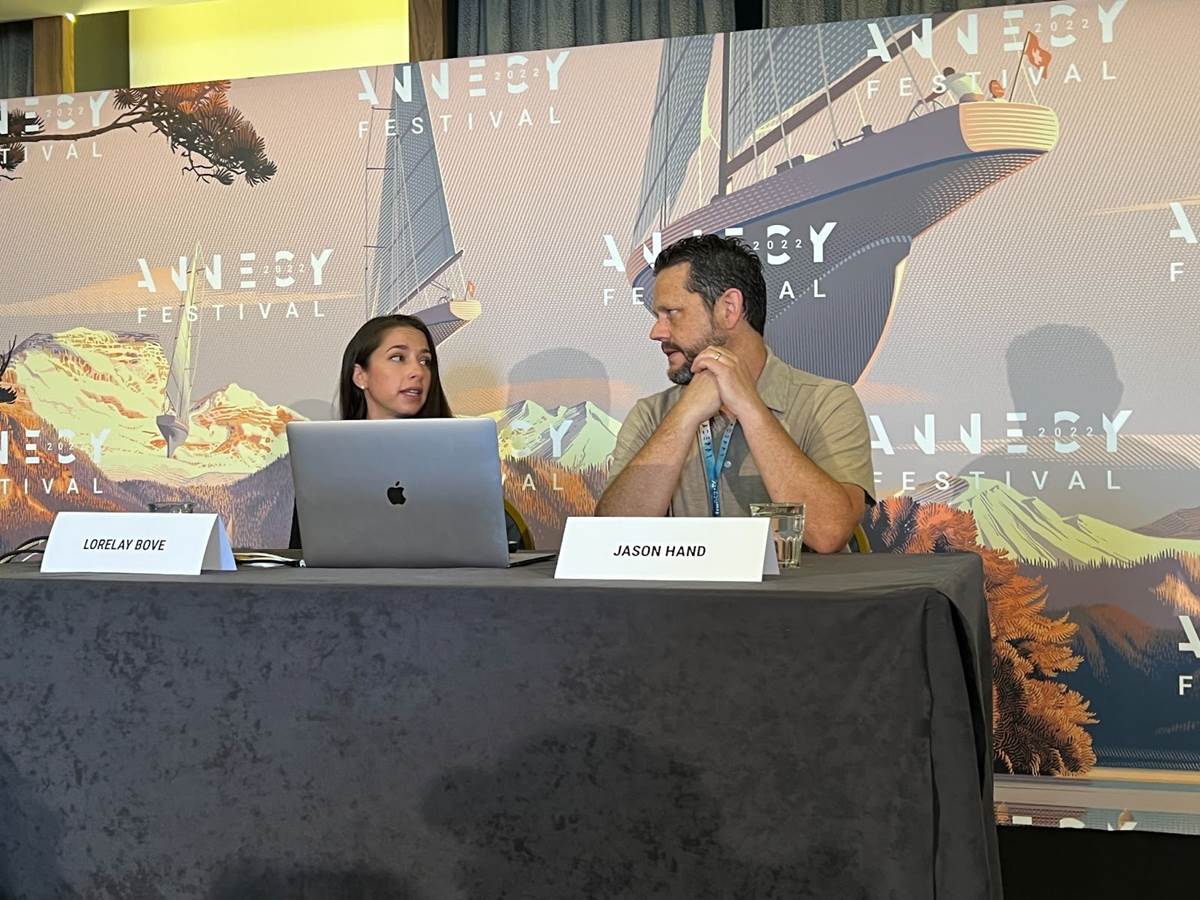The residents of Encanto may not be talking about Bruno, but thankfully two of the artists behind Walt Disney Animation Studios’ Oscar-winning films are. Head of Story Jason Hand and Associate Production Designer Lorelay Bové held a presentation at Annecy Festival called “Opening the Doors of Encanto: A Look Inside Art and Story.” Collaboration is always necessary to create these masterpieces, but something that was new for this film was inviting the production designers into the story sessions, which allowed for closer collaboration and sharing of ideas than ever before. That’s critical for a film whose main setting is a sentient being.
Casita, the home of the family Madrigal, was inspired by houses in Colombia’s Cocora Valley. Sketches of the house were rendered in CG and the team was able to walk through it using VR technology, which allowed them to revise the size of the courtyard and tower once they could see them from the perspective of the characters.
A few fun facts about Casita you may not have noticed is that each color on the house represents the character whose room is in that part. The tower, for example, belongs to Bruno and is emerald green. That color in many cultures is associated with predicting the future, which is why it was chosen. At the heart of Casita is Abuela’s window, through which the candle is always visible. A bit of a cheat, like Mickey Mouse’s ears, no matter which angle you see the exterior of Casita from in the film, the window and candle are visible. Likewise, every shot of the house shows Bruno’s tower as being farthest from everything else, symbolic of the character’s aloof nature.
Walt Disney Animation Studios’ “Truth in materials” concept was applied to the rules of Casita’s movement. Early on, it was decided that only items attached to the house would be able to move, excluding furniture from becoming animate. Tiles can flip to move things or even express Casita’s personality, but metal won’t bend unless it’s hinged. Speaking of Casita’s emotions, they’re tied to the family’s relationship. As they start to break apart, so too does Casita.
Each family member’s room becomes magical when they receive their powers. They each look more like a room the closer you are to the door, but segue into something more fantastic the deeper you go. Antonio’s room, inspired by the San Vicente de Chucurí rainforest where cacao is grown, transitions from bamboo wallpaper to real bamboo plants. Isabela’s room was inspired by Colombian flower festivals, with blooms on the walls opening and closing during her musical number like a rock concert Jumbotron. Mirabel’s room, the nursery, is infused with a lot of her personality on her side, it is just a room since her ceremony went wrong.
Mirabel’s personality was partially inspired by Lucille Ball in I Love Lucy, primarily the way she always wanted to be in the show, but once in it was awkward and trying to get out. Byron Howard’s initial sketch of the character included her signature glasses, which represent perspective, and her curly hair. As the story evolved, her costume changed to include embroidery that represents each member of the family to showcase her love and respect for them (Bruno is intentionally missing because Mirabel doesn’t know him and, well, nobody talks about him).
In direct contrast to Mirabel is Isabela, who wears a less folkloric dress, has smoother hair, and wears an orchid in it, the national flower of Colombia. Studio head Jennifer Lee contributed the idea that Mirabel and Isabela are always in opposition to one another, inspired by her relationship with her own sister.
Jason and Lorelay showcased lots of test animation from Encanto during the presentation, including a few hand-drawn pencil tests by Mark Henn and Renato dos Anjos. We were also treated to storyboards set to demo tracks for the songs “The Family Madrigal,” “Surface Pressure,” and “We Don’t Talk About Bruno,” the latter also including reference choreography footage. A character study that Byron Howard made of Bruno as a child making his first prediction about the impending death of his pet goldfish drew big laughs from the room.
Click here for more of our coverage from Annecy Festival.


